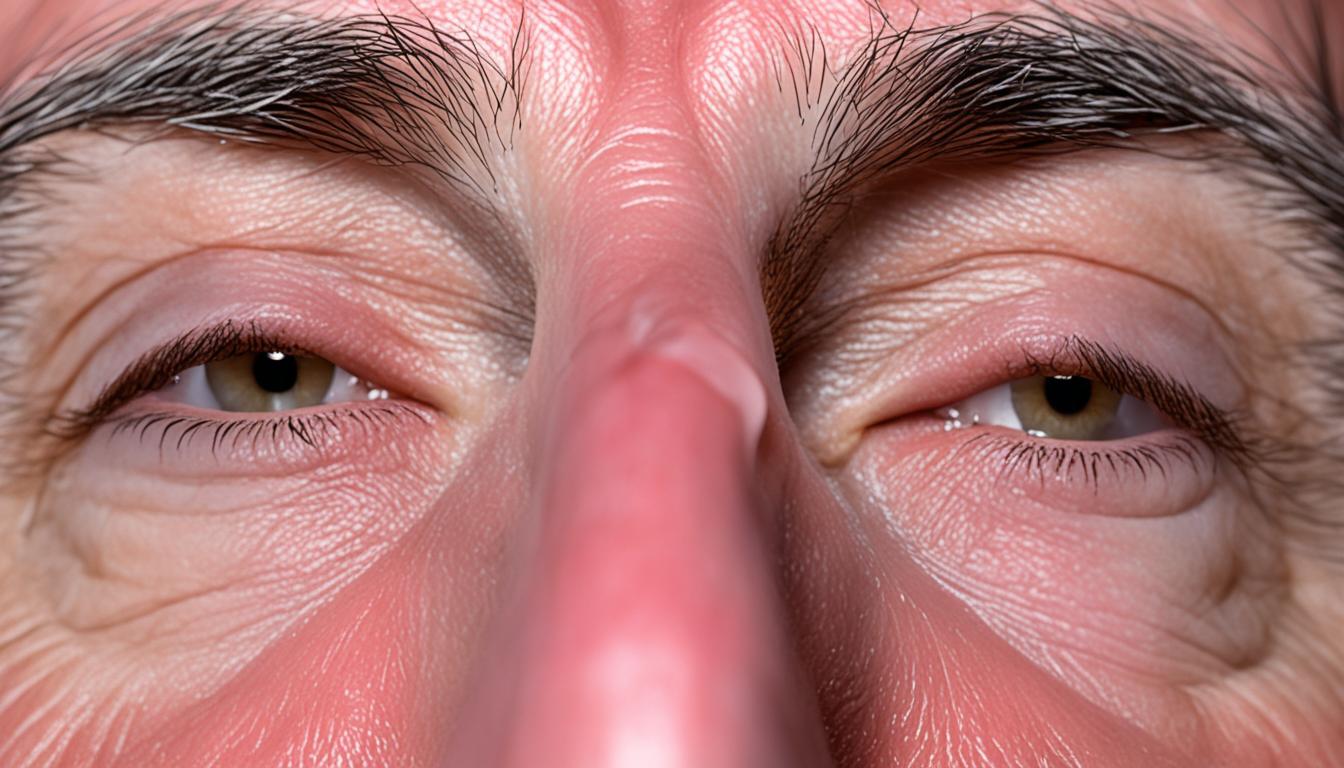A deviated septum happens when the wall between your nostrils is not straight. This issue can cause problems like trouble breathing, nasal blockage, often getting sick, nosebleeds, and struggling to sleep. Knowing about its symptoms, causes, how doctors find it, and what can help is key to handling it well.
Key Takeaways:
- A deviated septum refers to an irregular or shifted septum inside the nose.
- Symptoms of a deviated septum may include congestion, nasal obstruction, chronic nasal infections, nosebleeds, and difficulty sleeping.
- The condition can be diagnosed through a physical examination conducted by a medical professional or through self-check methods.
- Deviated septum causes can be congenital or due to nasal trauma.
- Treatment options include medication for symptom management and surgical procedures like septoplasty.
- Stem cell therapy is an innovative treatment option that shows promising results in the treatment of deviated septum.
Symptoms and Diagnosis of a Deviated Septum
Many people with a deviated septum don’t feel anything wrong. But, if it’s bad, daily issues can pop up. These include nasal congestion and more. Signs of a deviated septum are:
- Nasal congestion
- Sinus infections
- Nosebleeds
- Dry mouth
- Snoring
- Sleeping troubles
- A crooked nose
- Facial pain
- Headaches
These signs might point to a deviated septum. Yet, always see a doctor to be sure. A healthcare expert can tell by checking your nose and asking about symptoms.
They might use a nose tool to look inside. They’ll also ask about how it’s affecting you. This helps in getting a clear diagnosis.
You can also do some checks at home. Try looking in a mirror at your nostrils. See if they seem uneven. Or, pinch one nostril closed and then the other. Notice if breathing is hard.
| Symptoms of a Deviated Septum | Diagnosis Methods | Self-Check Methods |
|---|---|---|
| Nasal congestion | Physical examination | Checking nostrils in a mirror |
| Sinus infections | Patient history | Performing a breathing test |
| Nosebleeds | Inquiry about symptoms | |
| Dry mouth | ||
| Snoring | ||
| Sleeping troubles | ||
| A crooked nose | ||
| Facial pain | ||
| Headaches |
Causes and Treatment of a Deviated Septum
A deviated septum can happen from birth or due to nose injuries. Such injuries can come from sports, car accidents, fights, or falls. They make the septum inside the nose shift or tilt. This can cause problems like trouble breathing and a stuffed nose.
There are several ways to treat a deviated septum. Doctors might give you medicine to help with symptoms like a stuffy or inflamed nose. But, if your problems are serious and don’t get better with medicine, you might need surgery. One type of surgery is called septoplasty. It fixes the septum to make breathing easier and reduce symptoms.
In some cases, the lining of the nose might get too thick, which can also cause trouble. Then, a different surgery called turbinoplasty can help. It makes breathing easier by thinning the lining of the nose.
Today, doctors are also looking into using stem cells to treat a deviated septum. This method is new and aims to use the body’s natural healing abilities. By using stem cells, doctors hope to fix the nose in a way that lasts longer. This could mean long-term relief for those with a deviated septum.

